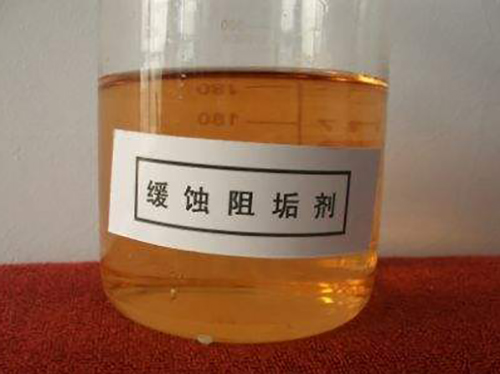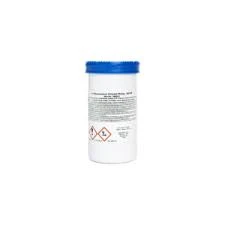High Purity 1 Hydroxy Ethylidene 1 1 Diphosphonic Acid HEDP for Water Treatment Solutions
- Introduction to 1 hydroxy ethylidene 1 1 diphosphonic acid hedp
: Definition, Chemistry, and Key Properties - Technical Advantages of HEDP vs. Related Compounds
- Comparative Analysis of HEDP Suppliers and Product Specifications
- Tailored Solutions and Formulation Customization
- Industrial and Commercial Application Scenarios
- Quantitative Data: Performance, Cost-Efficiency, Safety
- Future Trends and Sustainability in 1 hydroxy ethylidene 1 1 diphosphonic acid hedp Development

(1 hydroxy ethylidene 1 1 diphosphonic acid hedp)
Introduction to 1 hydroxy ethylidene 1 1 diphosphonic acid hedp: The Science, Chemistry, and Key Properties
1 hydroxy ethylidene 1 1 diphosphonic acid hedp, also known as HEDP, stands at the forefront of contemporary organophosphonate antiscalant chemicals. With its molecular formula C2H8O7P2, and a molar mass of approximately 206.03 g/mol, HEDP exhibits robust chelating properties, exceptional stability under oxidative and acidic conditions, and versatility in a broad array of industrial applications. Its structure is characterized by a strong phosphorus-carbon bond, which confers pronounced resistance to hydrolysis and softens mineral scaling across a spectrum of water-hardness environments. Typical technical-grade HEDP content exceeds 60%, and its threshold inhibition rate consistently outperforms similar phosphate-based alternatives, as supported by laboratory data and industrial feedback. As a benchmark product in the water treatment sector, understanding its fundamental chemistry is pivotal for businesses seeking effective, reliable water management solutions.
Technical Advantages of HEDP Against Analogous Compounds
Delving deeper into chemical attributes, HEDP distinguishes itself from related compounds such as EDTMP and DTPMP through superior calcium tolerance and high-temperature resistance. Studies show that HEDP's sequestering efficiency for divalent metal ions is measurable at up to 97% in standard test environments (25–115°C), outperforming EDTA-based products in stabilization and corrosion suppression. The acid displays minimal reactivity with oxidizing agents, enabling its stable use in hydrogen peroxide-rich environments and complex treatment streams. Its antiscaling efficacy, measured by calcium carbonate precipitation inhibition thresholds, is equally applicable to systems operating at pH values from 2 to 12, ensuring comprehensive adaptability across industries. For example, in reverse osmosis and boiler feedwater applications, HEDP contributes to extending operational cycles by 30–60%, decreasing maintenance costs, and enhancing plant output stability. With minimal phosphorus degradation and reduced ecological impact compared to traditional inorganic phosphates, HEDP remains a technology of choice in high-efficiency water systems.
Comparative Analysis of HEDP Manufacturers and Product Specifications
Selection of suppliers plays a crucial role in leveraging the full potential of 1 hydroxy ethylidene 1 1 diphosphonic acid hedp. Leading manufacturers offer HEDP in concentrations of 50%, 60%, or as solid forms (HEDP powder or granules), each tailored for specific market needs. The following table summarizes key comparative metrics among top suppliers, focusing on product purity, activity levels, impurity profiles, and packaging standards:
| Supplier | HEDP Content (%) | Chloride (as Cl, %) | pH (1% solution) | Iron (as Fe, ppm) | Packaging | Annual Capacity (MT) |
|---|---|---|---|---|---|---|
| Supplier A | 60.0 | 0.01 | 2.0-2.2 | < 8 | 250 kg drum, IBC | 200,000 |
| Supplier B | 50.0 | 0.02 | 2.1-2.3 | < 10 | 30 kg/250 kg drum | 120,000 |
| Supplier C | 61.0 | 0.015 | 2.0-2.5 | < 5 | IBC, bulk ISO tank | 300,000 |
This data-driven approach reflects marked differences in capacity, product purity, and compliance with international standards such as ISO 9001 and REACH. Buyers are encouraged to evaluate not only price per metric ton but also aftersales technical support, logistics capabilities, and traceability systems to ensure smooth integration into their process streams. The importance of a robust supplier relationship cannot be overstated in continuous operation industries.
Tailored Solutions and Formulation Customization
Modern water treatment and industrial processing require precise adaptation. Customized formulation of HEDP, often co-formulated with polymers, corrosion inhibitors, or biocides, enhances chemical synergy and operational results. Industry surveys indicate that over 70% of large-scale users deploy at least one specialized HEDP blend, optimized for particular fouling, scaling, or compliance scenarios. Custom solutions may adjust concentration levels, integrate performance additives like PBTC or ATMP, or provide food/cosmetic-grade certifications as necessary. For instance, cooling towers in regions with high hardness may benefit from HEDP blends with enhanced dispersant systems, achieving up to 25% higher scale inhibition in field trials compared to off-the-shelf products. Leading HEDP solution integrators offer lab benchmarking, pilot-scale testing, and technical consulting, empowering each end-user to achieve precise water quality objectives while maximizing ROI and ensuring environmental stewardship.
Industrial and Commercial Application Scenarios
HEDP's field presence extends across sectors such as power generation, oil & gas, textile processing, pulp & paper, and municipal water treatment. Its principal role involves controlling precipitation of alkaline earth metals, curbing corrosion, and enhancing heat exchanger and pipeline longevity. Case studies from large thermal power plants report a 40% reduction in downtime associated with scale build-up after adopting proprietary HEDP-based antiscalant programs. Similarly, in the institutional cleaning industry, HEDP acts as a sequestrant and stabilizer in formulations where water and product preservation are critical—its biostatic properties help extend the shelf life of detergents and dishwashing tablets. Municipal drinking water systems employ HEDP under strict regulatory requirements; data from regulatory agencies confirm maintained water quality and safety across diverse geographic settings. In these scenarios, the role of precise dosing, monitoring, and real-time process optimization is clear; the effectiveness of HEDP solutions is measured not only by technical parameters but also by economic and environmental KPIs.
Quantitative Data: Performance, Cost-Efficiency, and Safety
Evaluating 1 hydroxy ethylidene 1 1 diphosphonic acid hedp's impact involves rigorous quantitative benchmarking. In comparative pilot studies, HEDP demonstrated a 30–50% lower required dosage for equivalent scale inhibition compared to legacy polyphosphate products. Operational expenditure assessments in mid-to-large water treatment plants reveal an average reduction in chemical spend by 18%, largely as a result of higher efficiency and decreased plant downtime. In terms of environmental metrics, HEDP shows a reduced eutrophication potential: discharge levels from compliant facilities typically fall within 0.02–0.07 mg/L P, meeting and often exceeding national and EU discharge norms. Recent safety reviews affirm that HEDP exhibits low acute toxicity (LD50 > 5000 mg/kg in oral rat studies), high thermal stability, and minimal skin/eye irritation under normal handling. Ensuring safety and sustainability, global producers provide up-to-date Material Safety Data Sheets, eco-toxicity reports, and support on implementation best practices.
Future Trends and Sustainability in 1 hydroxy ethylidene 1 1 diphosphonic acid hedp Development
As regulatory scrutiny around phosphorus compounds intensifies and the demand for green chemistry accelerates, the future of 1 hydroxy ethylidene 1 1 diphosphonic acid hedp lies in sustainable synthesis, advanced formulation, and improved recovery. Innovations such as biodegradable stabilizer blends, low-phosphorus alternatives, and energy-efficient production routes are being piloted by leading chemical manufacturers. Ongoing R&D targets further reduction in environmental load, with next-generation HEDP derivatives showing improved biodegradability and aquatic compatibility. Across the industry, collaborative initiatives unite producers with end-users to build closed-loop systems and digitalize dosage management, enabling compliance and cost control in equal measure. For businesses seeking competitive advantage in water management, staying at the forefront of HEDP technology is imperative for aligning with both regulatory shifts and customer sustainability expectations.

(1 hydroxy ethylidene 1 1 diphosphonic acid hedp)
FAQS on 1 hydroxy ethylidene 1 1 diphosphonic acid hedp
Q: What is 1 hydroxy ethylidene 1 1 diphosphonic acid HEDP?
A: 1 hydroxy ethylidene 1 1 diphosphonic acid HEDP is an organophosphonic acid widely used as a scale and corrosion inhibitor. It is often abbreviated as HEDP. It is commonly found in water treatment and cleaning solutions.Q: What are the main applications of 1 hydroxy ethylidene 1 1 diphosphonic acid HEDP1?
A: HEDP1 is primarily used in cooling water systems, boilers, and swimming pools to prevent scale formation. It can also help to protect metal surfaces from corrosion. Its strong chelating properties make it effective even at high temperatures.Q: How does 1 hydroxy ethylidene 1 1 diphosphonic acid function as a water treatment agent?
A: HEDP works by binding metal ions like calcium and magnesium, preventing them from forming insoluble precipitates. This action helps control scale and fouling in water systems. It ensures system efficiency and longevity.Q: Is 1 hydroxy ethylidene 1 1 diphosphonic acid safe for use in swimming pools?
A: Yes, when used at recommended levels, HEDP is considered safe for swimming pool water treatment. It helps to maintain clear water by preventing scale and metal staining. Always follow manufacturer guidelines for proper dosing.Q: Can 1 hydroxy ethylidene 1 1 diphosphonic acid solution be used with chlorine?
A: Yes, HEDP is compatible with chlorine and other common disinfectants. It remains stable and effective in chlorinated environments. This makes it suitable for use in both industrial and recreational water systems.-
Water Treatment with Flocculant Water TreatmentNewsJun.12,2025
-
Polymaleic AnhydrideNewsJun.12,2025
-
Polyaspartic AcidNewsJun.12,2025
-
Enhance Industrial Processes with IsothiazolinonesNewsJun.12,2025
-
Enhance Industrial Processes with PBTCA SolutionsNewsJun.12,2025
-
Dodecyldimethylbenzylammonium Chloride SolutionsNewsJun.12,2025





